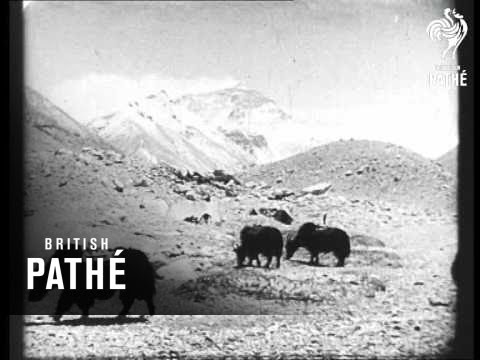Mount Everest, also known in Nepal as Sagarmāthā and in Tibet as Chomolungma, is Earth’s highest mountain.The northern approach to the mountain was discovered by George Mallory and Guy Bullock on the initial 1921 British Reconnaissance Expedition.
It was an exploratory expedition not equipped for a serious attempt to climb the mountain. With Mallory leading (and thus becoming the first European to set foot on Everest’s flanks) they climbed the North Col to an altitude of 7,005 metres (22,982 ft). From there, Mallory espied a route to the top, but the party was unprepared for the great task of climbing any further and descended.
The British returned for a 1922 expedition. George Finch (“The other George”) climbed using oxygen for the first time. He ascended at a remarkable speed—290 metres (951 ft) per hour, and reached an altitude of 8,320 m (27,300 ft), the first time a human climbed higher than 8,000 m.
This feat was entirely lost on the British climbing establishment—except for its “unsporting” nature. Mallory and Col. Felix Norton made a second unsuccessful attempt. Mallory was faulted for leading a group down from the North Col which got caught in an avalanche. Mallory was pulled down too, but seven native porters were killed.
The next expedition was in 1924. The initial attempt by Mallory and Geoffrey Bruce was aborted when weather conditions precluded the establishment of Camp VI. The next attempt was that of Norton and Somervell, who climbed without oxygen and in perfect weather, traversing the North Face into the Great Couloir. Norton managed to reach 8,550 m (28,050 ft), though he ascended only 30 m (98 ft) or so in the last hour. Mallory rustled up oxygen equipment for a last-ditch effort. He chose young Andrew Irvine as his partner.
On 8 June 1924, George Mallory and Andrew Irvine made an attempt on the summit via the North Col/North Ridge/Northeast Ridge route from which they never returned. On 1 May 1999, the Mallory and Irvine Research Expedition found Mallory’s body on the North Face in a snow basin below and to the west of the traditional site of Camp VI. Controversy has raged in the mountaineering community whether one or both of them reached the summit 29 years before the confirmed ascent (and of course, safe descent) of Everest by Sir Edmund Hillary and Tenzing Norgay in 1953.
Early expeditions—such as General Charles Bruce’s in the 1920s and Hugh Ruttledge’s two unsuccessful attempts in 1933 and 1936—tried to make an ascent of the mountain from Tibet, via the north face. Access was closed from the north to western expeditions in 1950, after China asserted control over Tibet. In 1950, Bill Tilman and a small party which included Charles Houston, Oscar Houston and Betsy Cowles undertook an exploratory expedition to Everest through Nepal along the route which has now become the standard approach to Everest from the south.
The Swiss expedition of 1952, led by Edouard Wyss-Dunant, was granted permission to attempt a climb from Nepal. The expedition established a route through the Khumbu ice fall and ascended to the South Col at an elevation of 7,986 m (26,201 ft). No attempt at an ascent of Everest was ever under consideration in this case.
